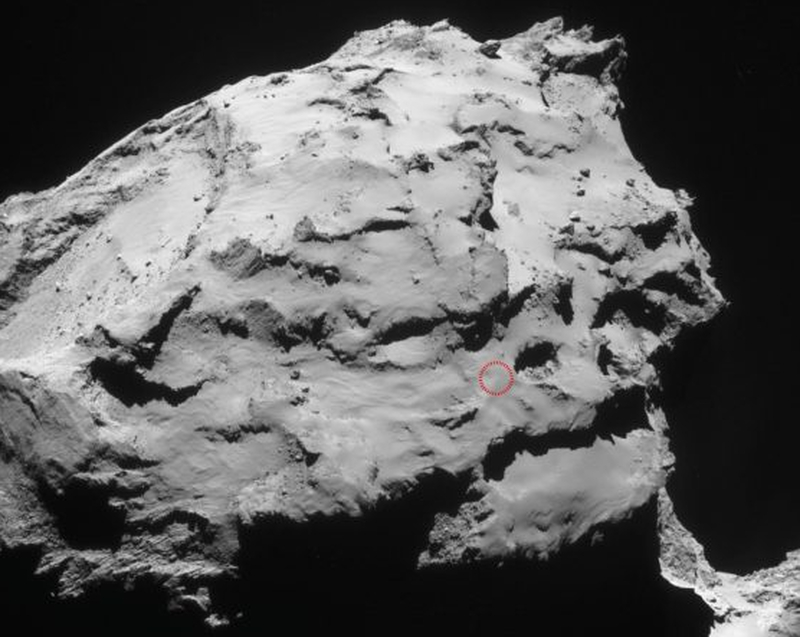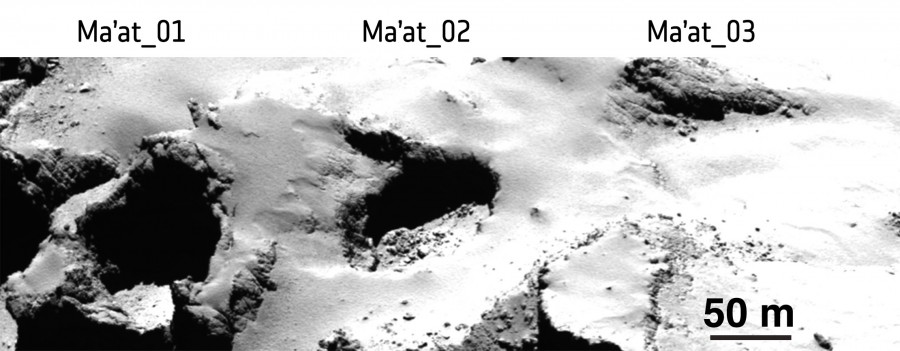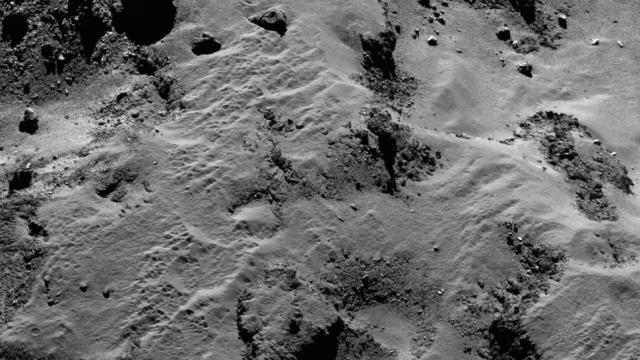Seventy-one days from now, the Rosetta spacecraft will end its historic mission by crashing onto the surface of its target, Comet 67P/Churyumov-Gerasimenko. Mission planners have now selected the spacecraft’s final, mission-ending destination — and it’s a good one.
The dusty and pitted Ma’ath region of Comet 67P. This will be the final resting place of the Rosetta spacecraft. (Image: ESA/Rosetta/MPS for OSIRIS Team MPS/UPD/LAM/IAA/SSO/INTA/UPM/DASP/IDA)
As announced by the ESA earlier today, Rosetta will make its controlled impact on an area known as Ma’at, a dusty and pitted region located on the comet’s small lobe.

The circle marks the spot on Ma’at (Image: ESA/Rosetta/MPS for OSIRIS Team MPS/UPD/LAM/IAA/SSO/INTA/UPM/DASP/IDA)

The Ma’at region is located on the smaller of the comet’s two prominent lobes. (Image: ESA/Rosetta/MPS for OSIRIS Team MPS/UPD/LAM/IAA/SSO/INTA/UPM/DASP/IDA)
This region was chosen for its scientific value, and, in the words of the ESA, was a spot that took “into account key operational constraints involved in executing the descent”. In other words, it was one of only a few locations where the spacecraft could actually be manoeuvred. The descent will be extremely complicated, requiring several precise navigational adjustments.
Ma’at features active pits, which hint at the comet’s ever-changing and dynamic surface. Scientists theorise that the pits are formed when the ceiling of a subsurface cavity can’t support its own weight, resulting in cometary version of a sinkhole. The resulting pits are exposed to the elements, causing continual erosion over time.

Active pits on Ma’at (image: ESA/Rosetta/MPS for OSIRIS Team MPS/UPD/LAM/IAA/SSO/INTA/UPM/DASP/IDA)
ESA scientists also want to take a look at Ma’at’s dust-covered surface. Coated on the comet like icing sugar, it exhibits sharp outcrops of materials that appear to be emerging from the ash-like surface. This matches several other regions of the comet, and scientists would like to take a closer look.
As Rosetta makes its descent, it will take hi-resolution images of the region, allowing scientists to peer closer view at the pits and the dusty surface. Unfortunately, the spacecraft will likely be damaged once it hits the comet, effectively ending the mission.
Rosetta is scheduled to crash on the comet in a controlled descent on 30 September 2016.
[ESA]
